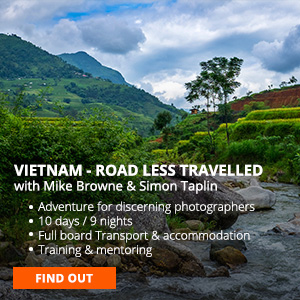Using Foreground 2
In foreground part 1 I took a particularly disappointing photo of the Blackmore vale in Dorset. Despite the view being spectacular the photo was lifeless and flat looking because it lacked foreground.
In part 2 we're going to look for foreground and how to utilise it in compositions to add a sense of depth to a photo. When you go somewhere with an amazing view you're getting a whole sensory input of sound, smell, temperature etc.
But a photo is missing all of them so it's vital to make the visual impact, the composition stand out and have as much depth as possible.
You can add foreground simply by getting close to something and including a bit of it in the composition down one side, above or below. Framing with natural objects works well as we demonstrate in the frame in a frame film.
These images are of the same place and taken only a few minutes apart and I think you'll agree the top one is dull, lifeless and flat. To bring it to life all I had to do was move back and include the bench and trees as foreground and a natural frame to the valley beyond.











































